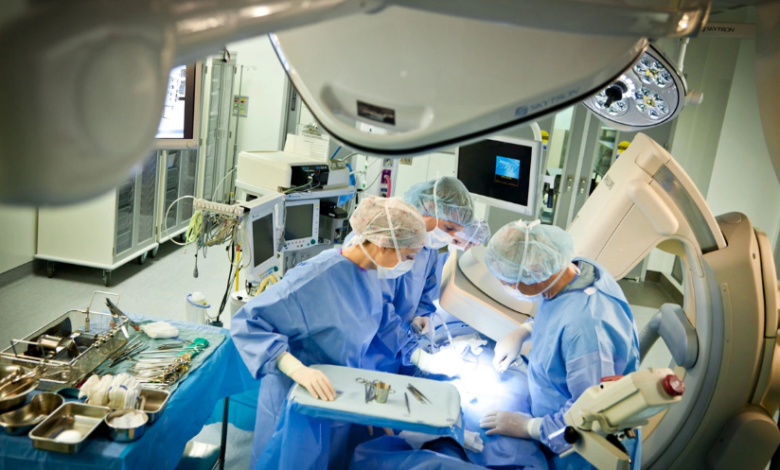Medical Equipment Advancements and Their Role in Patient Care

Introduction
In modern healthcare, medical tools have evolved significantly to ensure safety, precision, and comfort. Among the most commonly used instruments in clinical and laboratory settings are syringes. They serve a vital role in medication delivery, vaccination, and sample collection. Understanding different types of syringes is essential for healthcare professionals, as the choice of syringe directly impacts treatment accuracy and patient well-being. Over time, the design and manufacturing of syringes have become more advanced to meet various medical requirements.
Significance of Syringes in Medical Practice
Syringes are indispensable in the medical field. Their primary purpose is to inject or withdraw fluids with precision. From administering vaccines to measuring blood samples, syringes ensure controlled fluid transfer. They are also critical in laboratory experiments, anesthetic applications, and intravenous therapies. The evolution of types of syringes has introduced more efficient and user-friendly designs that improve both safety and performance during medical procedures.
Basic Structure and Components of a Syringe
Before diving into the various types, it is important to understand the basic structure of a syringe. Each syringe typically consists of three essential components:
- Barrel – The transparent cylinder that holds the liquid.
- Plunger – The movable part that pushes or pulls liquid through the barrel.
- Needle – The pointed, hollow tube that delivers or extracts fluids.
Different types of syringes may have slight modifications in these components based on their intended purpose. The size, length, and capacity of syringes vary depending on medical requirements.
Major Categories of Syringes
Syringes can be classified based on their usage, construction, and connection type. Below are the most commonly used types of syringes found in medical practice.
Disposable Syringes
These are single-use syringes that prevent infection and contamination. They are made of medical-grade plastic and are discarded after one use. Disposable syringes are cost-effective, lightweight, and ideal for hospitals and clinics where sterility is a top priority.
Reusable Syringes
Reusable syringes are made of durable materials such as glass or metal. They can be sterilized and used multiple times. These syringes are less common today due to the risk of infection, but they are still used in specific laboratory or veterinary settings where sterilization is strictly controlled.
Insulin Syringes
These syringes are designed for diabetic types of syringes patients who require regular insulin injections. They are calibrated in insulin units, ensuring precise dosage control. The needle of an insulin syringe is thin and short, minimizing discomfort during injection.
Tuberculin Syringes
Tuberculin syringes are used for tuberculosis testing and for administering small doses of medication. Their capacity is usually 1 ml, allowing for accurate measurements of minimal fluid quantities.
Luer Lock Syringes
Luer lock syringes have a screw-type connection between the needle and the syringe, ensuring a secure fit. This design prevents leakage or needle detachment during injection, making it ideal for procedures requiring high precision.
Slip Tip Syringes
Slip tip syringes feature a simple push-on mechanism for attaching the needle. They are easy to use and suitable for general injections and oral administration. However, they may not be as secure as luer lock types.
Oral Syringes
These syringes do not have needles and are used for giving liquid medication orally, especially to children or elderly patients. The tip is smooth and safe for mouth use, allowing accurate measurement without the risk of injury.
Catheter Tip Syringes
Catheter tip syringes have an extended nozzle, allowing them to connect easily to medical tubing. They are used for irrigating wounds, feeding through tubes, and flushing catheters.
Prefilled Syringes
Prefilled syringes come preloaded with a fixed dose of medication. They reduce preparation time, minimize human error, and improve hygiene. Prefilled syringes are widely used in vaccination programs and emergency medical treatments.
Safety Syringes
Safety syringes are designed to protect healthcare workers from accidental needle injuries. They come with retractable or shielded needles that automatically cover or withdraw after use. This innovation has helped reduce needle-stick incidents in medical facilities worldwide.
See also: The Impact of Blocked Gutters on Roof and Foundation Health
Specialized Syringe Types in Modern Healthcare
Apart from standard syringes, there are advanced versions designed for specialized applications. For example, high-pressure syringes are used in medical imaging procedures, while micro syringes are applied in laboratory research for precise measurement of tiny liquid volumes. These specialized forms show how technology continues to refine the efficiency of different types of syringes in healthcare.
Role of Materials in Syringe Manufacturing
The material used in syringe manufacturing greatly affects its performance and safety. Most disposable syringes are made from polypropylene, a lightweight and durable plastic. Glass syringes are used for certain laboratory applications due to their chemical resistance and clarity. Manufacturers are also focusing on developing biodegradable materials to make types of syringes more environmentally sustainable, reducing the medical waste burden.
Safety Standards and Sterilization Processes
To ensure reliability, syringes undergo rigorous testing and sterilization. They are typically sterilized using ethylene oxide gas or gamma radiation to eliminate any microorganisms. Each syringe is then sealed in sterile packaging. Following these safety protocols ensures that every syringe meets international healthcare standards before reaching hospitals and clinics.
Environmental Challenges and Sustainable Solutions
With millions of syringes disposed of daily, medical waste management has become a major global concern. Modern manufacturers are now working toward eco-friendly solutions, such as recyclable syringes and safe disposal programs. Reducing plastic waste from types of syringes is not only beneficial to the environment but also supports sustainable healthcare practices.
Technological Developments in Syringe Design
Recent advancements in syringe technology have made them more user-friendly and precise. Syringes now feature improved calibration markings, ergonomic designs for better handling, and materials that enhance visibility of the contents. Additionally, innovations like needle-free injectors and smart syringes equipped with electronic dose tracking systems are shaping the future of drug delivery.
Proper Handling and Disposal Practices
Safe handling of syringes is crucial in preventing infections and injuries. Healthcare workers are trained to follow strict protocols when using and discarding syringes. Used syringes must be disposed of in puncture-proof sharps containers to avoid accidental contact. These practices ensure hygiene and protect both patients and medical staff.
Conclusion
The evolution of syringe design reflects the ongoing efforts to enhance precision, safety, and patient comfort. From simple glass syringes to advanced safety and prefilled versions, the transformation has been remarkable. Understanding the different types of syringes helps medical professionals choose the right equipment for each task, ensuring effective treatment and minimizing risks. As technology continues to evolve, syringes will become even more efficient, sustainable, and tailored to meet the ever-changing needs of the healthcare industry.




